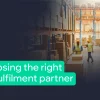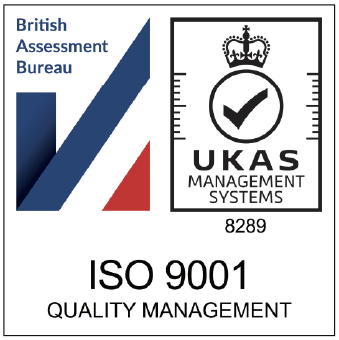There are a number of advantages to using a third party logistics provider that can help eCommerce businesses become more efficient and, ultimately, save time and money.
One of these is the potential of kitting and assembly services.
Not sure exactly what these processes are or how they could benefit your business or store?
Our guide is here to unpack these terms for you and reveal their many benefits…
What is a kitting and assembly service?
Kitting and assembly is a simple concept, but it can have a huge impact on your order fulfilment process.
Basically, a kitting and assembly service is when your 3PL partner assembles individual parts of your product into one. This could be because different parts of your product arrive from different manufacturers. They can then be assembled together at your fulfillment center so they are ready to ship as a single SKU as soon as an order comes in.
It could also be that you want to bundle multiple products together. This is common for subscription box fulfilment, though any type of eCommerce store or retailer can make use of it. For example, promotional offers or ‘kits’ containing multiple items.
Are kitting and assembly the same thing?
The terms ‘kitting and assembly’ are often used interchangeably. But, there is a slight difference in what they actually mean to your third party logistics partner.
What is kitting?
As we have already mentioned, kitting is a service that can be used by almost any eCommerce store.
The process involves taking individual items and combining them under one SKU.
Kitting products together in this way only makes sense if you know in advance that a particular combination of items will be regularly purchased. In fact, they should usually be listed on your website as a permanent bundle or kit.
This is popular with things like beauty and cosmetics fulfilment. Often, kits or gift sets are put together to upsell to the customer at a better value price.
What is assembly?
Assembly is the actual process of putting kits or items together so they are ready to be shipped.
Sometimes, this will look something like a production line. The package will be passed along with the necessary items added to it. A good 3PL partner will also take their full care and attention in ensuring that the customer receives the ultimate unboxing experience.
This could be by using your own bespoke packaging or including your own additional leaflets or other guides inside.
It might also be that you want your products to be reworked with your own labelling. Often, different products are sourced from different manufacturers. In this case, you may well want to put your own labelling on them so they all carry your own branding.
What are the benefits of using a kitting and assembly service with a 3PL?
So, the question now is exactly what can your business gain by using a kitting and assembly service from a 3PL?
Some of the main benefits include…
1. A faster, more efficient fulfilment process
Perhaps the most immediately noticeable benefit of kitting and assembly is a more efficient fulfilment process.
When you kit and assemble your items in advance, they can be ready for dispatch almost as soon as the order comes in.
By reducing the time spent on picking and packing, you will also be saving your business money. Instead of having to find each item and assemble it every time, the warehouse team can simply choose the correct kit and move onto the next order.
2. Improved order fulfilment capacity
As a knock on benefit related to the previous point, a faster order fulfilment process means you have more time available.
The result? You can take on more orders without becoming overwhelmed. When sales start coming in strong, you won’t have to worry so much about delays occurring in the fulfilment process as you will already know exactly how many kits you have ready to go.
3. Reduced chance of pick-and-pack mistakes
Human error is not only a part of the fulfilment process, but a part of life.
When things get busy, mistakes can be made and sometimes, this can mean your customer receives the wrong item.
Kitting and assembling in advance can help reduce the chance of mistakes like this from happening. As part of the assembly process, quality control can ensure that every kit created is spot on. So, incorrect items won’t be adding to any strain on your customer services or returns processes.
4. Helps manage inventory levels
Another part of your fulfilment process that kitting and assembly can have a positive impact on is your inventory management.
As we have already explained, when you kit in advance, you can create a single SKU. Again, this limits the chances of mistakes happening during picking and packing. It also allows you to have a clearer view of your inventory.
For instance, with your kits pre-assembled, you won’t have to worry about oversights in product availability. If for example, you were running low in one particular item, there is less chance of you being unable to fulfil orders that have already come in.
Related: What is the Best Way to Manage and Control My Inventory?
5. Optimised shipping costs
Kitting can be a great sales tool. Customers love to get more for their money, making bundles an excellent draw.
It can also help you optimise your shipping costs, too. The size and weight of your packages can cause the price to vary, so knowing in advance how much delivery will cost can allow you to plan better.
Kitting and assembly: Is it right for your eCommerce store?
It’s true that kitting and assembly can have huge benefits to many eCommerce businesses. But, this only applies to the right circumstances.
If you aren’t sure, we recommend having a chat with your 3PL partner about whether adding a kitting and assembly would have a positive impact on your store.
Want to know more about kitting and assembly? Contact 3PL today for some friendly advice on how it could work for you.
Find more advice for your eCommerce business on the 3PL blog…
5 Ways to Improve Your Order Fulfilment Process | What Makes the Most Successful Subscription Box Business? | How to Best Manage Returns For Your eCommerce Store
Speak to 3PL about your order fulfiment
It’s time to supercharge your business and overtake your competitors. Speak to 3PL today and find out how we can take your ecommerce and B2B fulfilment to the next level.


